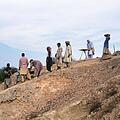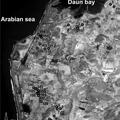Shell Trade and Shell Working During the Neolithic and Early Chalcolithic at Mehrgarh, Pakistan
AIthough the presence of a specialized shell industry and the widespread use of shell are well documented at sites of the Indus Civilization (2500-1750 B.C.), the early stages of this industry were not known until recent excavations at the site of Mehrgarh, Pakistan.






























